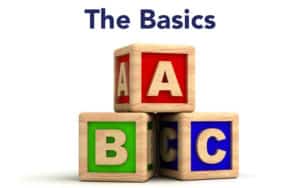How should you plan for the future, given all that we’ve been through since March 2020? One important step is to get your estate plan in order. While many people became more aware of their mortality since the pandemic began, just as many have kept putting off having an estate plan done. The time to do it, according to the recent article “A Simple Guide to Estate Planning Best Practices” from Accounting Web, is now. Here’s how.
Start with a will. The size of your estate doesn’t matter. Having a will means that you are able to grant whatever you own to someone else on your death. If you don’t have a will, your state’s law will distribute your worldly goods. This method makes certain assumptions that might not be true. You might not want your children to inherit everything you own at age 25. You may also have a distant cousin who thinks they are entitled to an inheritance and is willing to litigate just to get some of your assets. Having a will is the start of having an estate plan. It’s also how you name the executor, the person who will be in charge of administering your assets after death. Your will is used to name a guardian to care for minor children.
Consider your estate planning goals. If you have an estate plan that’s older than four years, it’s time for a review. If you don’t remember when your estate was last done, you definitely should have it reviewed. Your assets may have increased or decreased. The person you named to be your executor may have moved away or died. The past five years have seen a large number of new tax laws, which may have a major impact on your estate plan. You may need to establish trusts and make gifts to keep your wealth in the family.
Could low-cost wealth transfers be right for you? Making gifts to your next of kin may allow them to have access to capital, while decreasing your taxable estate. One common method to do this is through an intra-family loan. By providing a younger member of the family with a loan at a minimal federal interest rate, the younger generation can invest in assets that are likely to appreciate outside the older generation’s taxable estate. Talk with your estate planning attorney about how to do this properly. It’s not a do-it-yourself transaction.
Grantor Retained Annuity Trusts (GRATs) A GRAT allows you to retain an annuity interest in a separate trust, while leaving the remainder beneficiaries. The value of the annuity is removed from the value of the GRAT-constrained property, so beneficiaries only need to pay taxes on the remainder of the value. Low interest rates made a GRAT very attractive, and low entry requirements provide an opportunity to appreciate assets within the GRAT, which might have otherwise been levied on the investments if they were passed through a will. GRATs may need management—one strategy is to combine assets with a series of long and short-term trusts to prepare for market volatility.
Grantor Trust Acquisition of Assets. Here’s a slightly complicated but effective way to reduce taxes on assets: selling them to a grantor trust. The sale may still be taxable, but for a reduced rate. An individual may create and fund a trust using a portion of their gift tax shelter allowance. This ensures that the assets in the trust will be sheltered from transfer tax in the future. The trust structure works as a “grantor” trust for income tax purposes with the individual as the taxpayer, who is liable to report all income generated from the trust. Here’s the neat twist: the individual may sell these appreciated assets to the grantor trust without expressing capital gains. The assets in the trust may grow over time, so the trust estate develops with less fear of tax liability. This is a complex transaction that an estate planning attorney can discuss with you.
One thing is certain: the financial demands of the pandemic have created a need for government agencies to find revenue. The time to prepare for increased taxes on wealth is now.
Reference: Accounting Web (June 23, 2021) “A Simple Guide to Estate Planning Best Practices”



